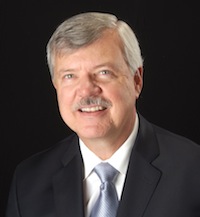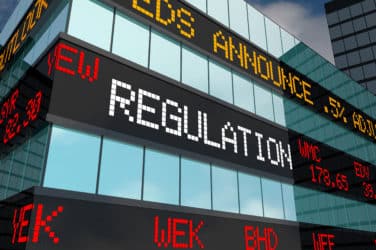
Can markets be both fair and efficient? That’s an open question according to many, as the combination is the holy grail of sorts.
Most market participants, both buy side and sell side, would probably not take issue with the thesis that automated trading has aided price discovery, but questions about execution quality still remain.
The pace of technological change over the past several decades would appear to make the prospect of a floor-based trading model co-existing with electronic market making in the not-too-distant future quite remote.
“The quoted markets are so much better and the impact of executing an order is so much smaller,” Keith Ross, chief executive of PDQ ATS, told Markets Media. “People have this romantic vision of what the markets used to be like, but the spreads were much wider, commissions were much higher. Going back to the floor would be like going back to manual telephone operators.”

Keith Ross, PDQ ATS
Still, the advent of electronic market making has created some problems that weren’t present on the floor, namely the physical presence of human beings who stand ready to buy and sell securities when liquidity starts to evaporate.
“In the current electronic market place, there’s no opportunity to aggregate liquidity,” said Ross. “In the days before electronic trading, you could go to a central location like the specialist post and ask the question, ‘What is the market?’ The specialist would tell you what was going on, you’d get a picture, there would be people in the crowd who had an interest to buy and sell, and a broker, before revealing his interest, could assess where the market was and what was going on.”
A study from the Capital Markets Cooperative Research Centre (CMCRC), an Australia-based think tank, has found that improving market fairness helps to reduce transaction costs, but not all market design changes simultaneously enhance both market fairness and efficiency.
The research by Professor Michael Aitken, Professor Frederick Harris and Dr. Shan Ji is based on the security Market Quality (MQ) framework developed at the CMCRC. The study shows that quoted bid-ask spreads are positively related to the incidence of ramping cases across seven liquidity deciles. The magnitude is also economically significant; a 50% decrease in the incidence of ramping reduces spreads 6% to 11%.
The study presents evidence that auctions at the close reduce closing price manipulation and lower quoted spreads. “Circuit breakers and the prohibition of short positions reduce the incidence of ramping but both these market designs substantially increase spreads, exemplifying the integrity-efficiency trade-off,” according to the authors.
PDQ ATS offers liquidity discovery and potential price improvement through the aggregation of an “electronic algorithmic crowd” of automated market makers competing for order flow. By allowing its liquidity providers to respond to orders, PDQ’s patented process delivers pools of liquidity to those seeking larger execution sizes, creating improved market efficiencies for institutional traders, according to Ross.
“One of the frustrations that you read about these days is that people see a market on the screen that may or may not be satisfactory for what they want to do, and then when they go to reach for it, it seems to disappear before they get there,” said Ross. “When we get an order, we can pause it for up to twenty milliseconds, and in that time, we can aggregate the liquidity so they can trade with it all at the same time.”
Regulators “need to try to keep up with the advancements and technology in the market place,” he added. “I know they’re addressing that rather specifically. I would take a somewhat contrary view to say that the markets are so efficient that the most important thing for the regulators at the moment is to not make them unfair in another direction.”
Featured image via pogonici/Dollar Photo Club






